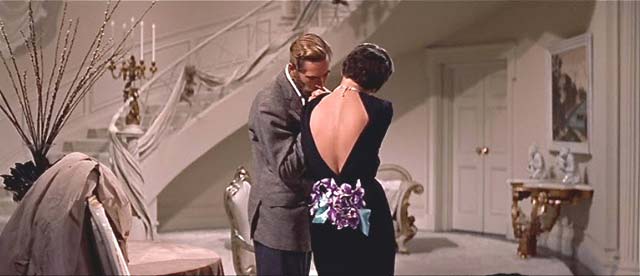Despite their time in therapy, men still don’t have a clue about what their wives and therapists want from them. (…) Most of my male clients feel that their previous therapy experience was about forcing them to fit a template of what the Therapy World believes love and relationships should look like. While the therapeutic language of “intimacy” is supposedly gender-neutral, most men see it as reflecting values and ideals that appeal disproportionately to women. (…)
The reason men can talk about feelings and relationship patterns in consultation rooms, but are unlikely to keep doing it at home is simple: emotional talk tends to produce more physiological arousal in men—they experience it more stressfully. Unlike women, they don’t get the oxytocin reward that makes them feel calm, secure, and confident when talking about emotions and the complexities of relationships; testosterone, which men produce more of during stress, seems to reduce the effect of oxytocin, while estrogen enhances it. It takes more work with less reward for men to shift into and maintain the active-listening and self-revealing emotional talk they learn in therapy, so they’re unlikely to do it on a routine basis. (…)
Men have to feel compelling reasons to change and, most important, to incorporate new behavior into their daily routine. I believe that the primary motivation keeping men invested in loving relationships is different from what keeps women invested, that it has a strong biological underpinning present in all social animals, and that it’s been culturally reinforced throughout the development of the human species.
The glue that keeps men (and males in social animal groups) bonded is the instinct to protect. If you listen long enough to men talking about what it means to love, you’ll notice that loving is inextricably linked, for many men, to some form of protection. If men can’t feel successful at protecting, they can’t fully love.
The main role of males in social groups throughout the animal world is to protect the group from outside threats. For the most part, males participate in packs and herds only if the group has predators or strong competition for food. Herds and packs without predators or competitors, like elephants and hippos, are matriarchal, with males either absent or playing peripheral or merely sperm-donor roles.
Male physiology is well-evolved for group protection, with greater muscle mass, more efficient blood flow to the muscles and organs, bigger fangs and claws, quicker reflexes, longer strides, more electrical activity in the central nervous system (to stimulate organs and muscle groups), and a thicker amygdala—the organ that activates the flight or fight response. That’s right, the first emergency response in male social animals is flight, with the option to fight coming into play only when flight isn’t possible. The principal protective role of males in social groups is to lead the pack to safety. (…)
As historian Stephanie Coontz puts it, previous generations widely assumed that men and women had different natures and couldn’t truly understand each other. The idea of intergender emotional talk independent of the need to protect didn’t emerge until the dissolution of the extended family, which began in the middle of the 20th century. Previous to that, the nuclear family—an intimate couple and children living as an isolated unit—was a rarity. Other family members were in the same house, next door, or across the street. Women got their emotional validation from other women, although they certainly wanted admiration from their men and vice versa. Today, research shows that the healthiest, happiest women have a strong network of girlfriends. In earlier times, men tended to associate mostly with other men—a cultural construct that’s still prevalent in many parts of the world, frequently reinforced by religious beliefs. (…)
Couples typically find it particularly interesting that males remain connected to social animal groups by proximity to the females, even though they don’t interact much, while the females enhance group cohesion by frequently interacting with one another. If the couple has had a boy and girl toddler, they can see this difference in social orientation for themselves early on. Assuming that the children are both securely attached, the boy will tend to play in proximity to the caregiver, always checking to see that he or she is there, but seeking far fewer direct interactions—talking, asking questions, making eye contact, touching, hugging—than the girl. As long as he knows his caregiver is present, his primary interaction is with the environment.
Similarly, a man can feel close to his wife if he’s in one room—on the computer, in front of the TV, or going about his routine—and she’s in another. He’ll likely protest, sulk, or sink into loneliness if she goes out, which she may well do since he isn’t talking to her anyway. To her, and to uninformed therapists, it seems that he wants her home so he can ignore her. But he isn’t ignoring her; her presence gives stability to his routine.
This little example of why proximity to his wife is crucial to him works wonders in opening a man’s eyes to that fact that his wife gives meaning and purpose to his life. In fact, we tend to think about meaning or purpose only when we’re losing it, which is why men tend to fall in love with their wives as they’re walking out the door, with their bags packed. Evidence for the drastic loss of meaning and purpose that men suffer when they lose their wives is seen in the effects of divorce and widowerhood on men: poorer job performance, impaired problem-solving, lowered creativity, high distractibility, “heavy foot” on the gas while driving, anxiety, worry, depression, resentment, anger, aggression, alcoholism, poor nutrition, isolation, shortened lifespan, and suicide. The divorced or widowed man isn’t merely lonely—he’s alone with the crushing shame of his failure to protect his family.
I’m able to use education about the effects of divorce on men clinically, because most guys know someone at work who’s lost his family and become a shadow of his former self. As a quick way of accessing men’s fundamental sense of the meaning and purpose of their lives, I ask each man to write down what he thinks is the most important thing about him as a person. “How do you want those you love to remember you,” I ask. “Near the end of your life, what will you most regret not doing enough of?”
Because meaning and purpose are elusive psychological concepts—a way of describing why we do something rather than what we do—men will rarely hit the mark at first. They say they want to be remembered as a “good provider,” “hard worker,” “loyal man,” choosing mostly protective terms. I then ask them to imagine that they have grown children and how they’d most like their children to feel about them when they’re gone. “Dad was a good provider, hard worker, loyal, etc. I’m not sure he cared about us, but he was a good provider, worked, and was loyal” or “Dad was human; he made mistakes. But I always knew that he cared about us and wanted what was best for us.” On a deep level, all the men I’ve worked with have wanted to be remembered with some version of the second statement—as both protective and compassionate. Helping men learn to express care and compassion directly to the people they love is the key to bridging the divide between their protective instinct and their reluctance to show their emotions. (…)
A major challenge to lasting change in marriage lies in the fact that couples’ day-to-day interactions operate largely on automatic pilot. Emotional response is triggered predominantly by unconscious cues, such as body language, tone of voice, and level of mental distractedness. Negativity in any of these inadvertently sets off the automatic defense system that’s developed between the parties. Once triggered, the unaware couple can easily spiral into dysfunctional patterns of relating. They tend to get lost in the details of whatever they’re blaming on each other, with no realization of what’s actually happened to them—namely, an inadvertent triggering of the automatic defense system. (…)
Rather than forcing themselves to act like the same instruments playing the same notes in a duet, couples who begin to interact in this way become like two different instruments playing different notes to create something together that neither can do individually—relational harmony.
{ Steven Stosn/Psychotherapy Networker | Continue reading }





















